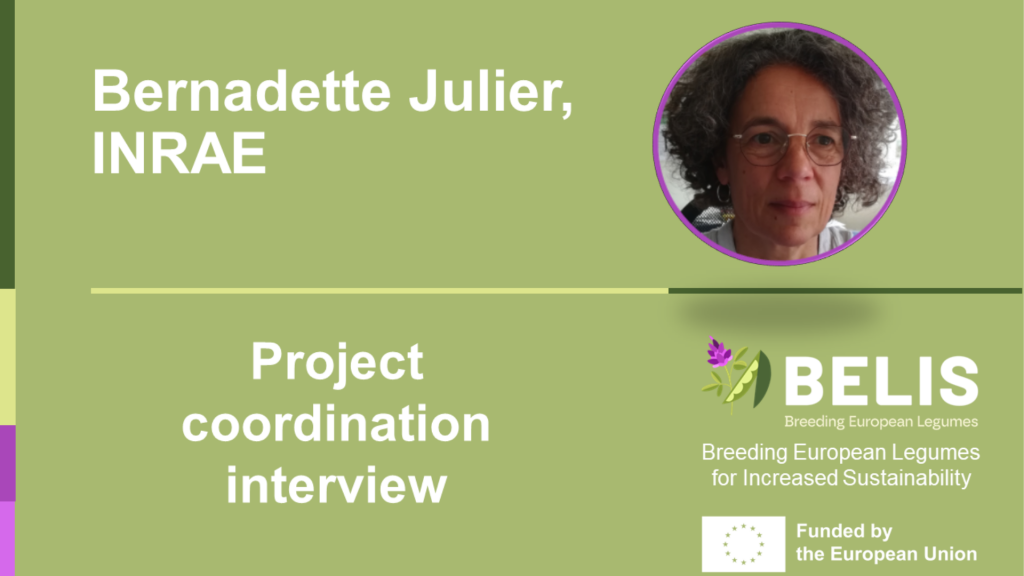10 Feb 2025 – World Pulses Day!
Discover how BELIS Project contributes to farming sustainability through legume breeding and innovation
BELIS seeks to design conditions that allow an achievement of genetic progress by breeders and its efficient delivery to the seed industry, as well as to other stakeholders.
The BELIS project started on 1st October 2023, with a consortium of 34 partners, including research and technical institutes, plant breeders and seed companies as well as other relevant actors in legume breeding from 18 countries (15 EU countries, Switzerland, United Kingdom and Lebanon).
Sustainability and competitiveness challenges in legume breeding
Legumes are widely acknowledged to provide multiple benefits in farming and food systems: They are a source of proteins and other nutrients for human and animal consumption, and when included in cropping systems they can fix atmospheric nitrogen, besides other advantages linked to crop rotations. However, their presence in European cropping systems has not reached its potential, and Europe is still highly dependent on plant protein imports. One of the reasons is the lack of sufficient legume varieties that can provide stable and abundant yields adapted to different agro climatic situations and stresses, with quality traits suitable for food and feed.
Less-than-optimal breeding efforts have so far been invested by public and private breeders. But with adequate breeding inputs, the genetic gains in legume crops could reach those obtained in major crops. While legume breeding is mostly based on traditional phenotypic recurrent selection that requires updating, the use of molecular information and exploitation of genetic resources could also increase selection intensity and speed.
In addition, the genetic progress achieved in new varieties could be delivered much more efficiently to the legume value chain actors (farmers, food and feed industry) and the specific requirements of down-stream actors could be better considered in breeding. The first step of genetic progress delivery relies on the variety registration process, ruled at an international level but conducted by national registration offices. The current registration process needs to be improved by putting a stronger focus on the stakeholders’ needs. The second step is to provide adequate information on the available varieties. Extension services could efficiently deliver information to all actors of the legume value chains, and the seed industry is pivotal in the delivery of genetic progress to farmers by granting access to improved seeds. Finally, improved governance and business models should be developed to allow more efficient, profitable and diverse legume varieties to reach farms.

BELIS objectives
As a whole, the BELIS project addresses these challenges and deliver tools and solutions that will enhance the economic sustainability of legume-based farming systems. This ultimate goal is attained through three specific objectives:
- To develop tools and methodologies for cost-effective breeding programmes and deliver proofs of concept, with and for breeders.
- To facilitate the economic and regulatory environment: variety registration, variety recommendation and business models.
- To implement an efficient, ambitious and durable transfer of innovation through the BELIS platform that includes a network of breeders and actors from scientific research, extension services and seed, food and feed industries, as well as a training portfolio.
The project focuses on seven forage crops (red, white and annual clovers, lucerne, sainfoin, birdsfoot trefoil and vetches) and seven grain crops (pea, faba bean, soybean, white lupin, lentil, chickpea and common bean) representing the diversity of legume species cultivated in Europe.
BELIS provides scientific advances and technical innovations on key aspects of the breeding process: genotyping and phenotyping methods and tools, proposals for agronomic and technological characterisation of varieties, cross testing in different conditions, and pathways for improving and homogenising registration processes. All these results will be streamed to design and validate new governance and business models for the legume breeding industry. An ambitious networking, dissemination, capacity building and exploitation plan will help BELIS results and recommendations reach the breeding industry, the farmers and the regulatory bodies.
BELIS contributes to a more competitive legume breeding industry in Europe and to delivering profitable and adapted genetic varieties for European farmers seeking better legume seeds.






















